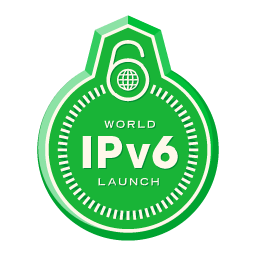In a brilliant presentation by Facebook’s Paul Saab at the recent v6 World Congress in Paris, he outlined how Facebook is well on the path toward moving to an IPv6-only internal network. He makes the point that why should you deal with the headache of maintaining a dual-stack (IPv4/IPv6). Instead just move your internal network to be IPv6-only and then have dual-stack devices on the edge of the network to interact with the legacy IPv4 Internet. You can download a copy of the slides (and view commentary in the IPv6 Group on Facebook) to read all about the process, but here’s the key summary slide 31:
Those statistics are:
- 100% of hosts they care about respond on IPv6 (Hosts that are not IPv6 ready are going away.)
- 75% of internal traffic is now IPv6 with a goal to be at 100% by Q3 2014 or earlier
- 98% of traffic in and out of HHVM is IPv6
- 100% of our memcache traffic is IPv6
- A goal of being 100% IPv6-only in 2-3 years
Very impressive to see! Paul’s presentation is worth viewing because he outlines the challenges that Facebook faced from dealing with vendor equipment to getting developers to use IPv6. It’s a great case study that we’ve added to our IPv6 case studies page. We wrote about this presentation back in March, but it’s worth repeating today on World IPv6 Launchiversary #2.
Facebook very clearly understands the need to move to the production version of the Internet – and they are taking steps to ensure that their site and services will be available to the next 5 billion people who come online! They are going to be out in front of most other companies with having made the transition over to IPv6.
What are you waiting for? Visit our “Start Here” page or check out our IPv6 resources – and let us know if there is anything more we can do to help you!







